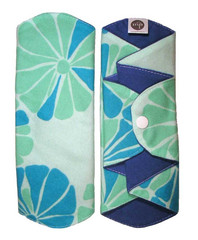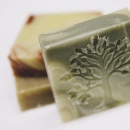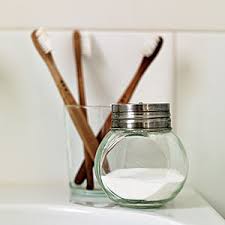Did you know that your bathroom is usually the second most wasteful room in your home?
According to Own Your Impact,
“over 30 million toothbrushes are disposed of each year in Australia – contributing approximately 1,000 tonnes of landfill annually.”
Making changes to reduce this is easy!
1. Start refilling your Shampoo and Conditioner containers or swap to Shampoo Bars and Conditioner Bars from the Wasteless Pantry.
Our liquid silicone free Shampoo and Conditioner are cruelty-free, vegan, paraben free, palm oil free, sulphate free, grey water safe and locally made in WA. We have a range of Shampoo and Conditioner Bars from Ethique as well as a local WA company, which are all palm oil free, vegan and replace many bottles of product in just one little bar. You can just buy a little of the shampoo and conditioner to try it out too – so if it doesn’t suit your hair type there isn’t the leftover product to dispose of. But we think they all do a great job in keeping hair clean, healthy and beautiful, just without the waste.
2. Swap to a bamboo Toothbrush, plastic-free Floss and consider making your own Toothpaste or Toothpowder.
Toothbrushes are only $3.99 each at Wasteless Pantry so it’s pretty low risk to try one out to see if they suit your needs. We also have plastic-free silk Floss and will have access to plastic-free Vegan Floss soon. Recipes and all the ingredients you need to try out making your own Toothpaste are readily available in store too.
3. Start refilling your liquid Hand Wash and Body Wash containers or swap to Soap Bars from the Wasteless Pantry.
We have liquid Body and Hair Cleanser, Organic Castile Soap, as well as Soap Bars which are perfect for keeping you clean without drying out your skin. These are all pH balanced, grey water safe, cruelty-free, vegan, locally made in WA, and palm oil free. Your containers can be refilled over and over again! We have soap racks as well if you don’t already have one or you can even use one of our coconut fibre scourers as a drying bed for your bars. It is important to dry out any bars you use between uses so that you get the most out of your product and aren’t washing away more than you need because the bar was soft.
4. Stop buying novelty Bubble Bath containers and just refill the kids favourite.
Kids love bubbles! However, many of the fun designed packaging types aren’t the best for their delicate skin. Pick their favourite container you already own and refill with our Bubble Bath which is locally made and formulated with gentle plant-based ingredients. It is pH balanced, suitable for babies and toddlers and won’t scum up your bath as there are no fats present. So this swap saves the Earth and you some cleaning too!
5. Stock up on plastic-free recycled Toilet Paper.
It’s well and good to recycle your paper via your kerbside bin, but that paper then needs to be recycled into something. Paper can only be recycled in more paper a small number of times before the fibres start to degrade so there need to be other options for it to be transformed into. Toilet Paper is one of those options! We stock Who Gives A Crap branded Toilet Paper as we believe this company is doing great things for the Earth and people as their product is 100% recycled, contains no inks, dyes or scents, and they donate 50% of their profits to help build toilets for those in need. Plus, the rolls are 3-ply so super strong, very soft, and double length meaning there are fewer arguments about whose turn it is to change the roll.
6. Switch to plastic-free Cotton Buds.
The plastic stick in cotton buds is not recyclable. You could compost the cotton wool at the tip, but would you go to that trouble? Cotton Buds are not something my family use a lot of, but it is good to know that now we have switched to plastic-free Cotton Buds from Wasteless Pantry we are able to just compost the whole thing once used.
7. Soothe your muscles with refills of Epsom Salts.
Epsom Salts are great thrown in a bath to soothe achy tired muscles, just a handful makes a big difference. Instead of buying packets you can simply buy as little or as much as you need in your own container at Wasteless Pantry. You could get a whole kilogram for $4.99 if you really wanted to! Plus it’s great for your garden too.
8. Switch to reusable Menstrual Cups and Menstrual Pads.
For those of us who need them and who have tried them, there is a rare woman who doesn’t love them! These products save you a ton of money, heaps of waste plus they are so much more convenient and comfortable than the disposable options. Plus the risk of Toxic Shock Syndrome is negligible so your health wins too! At Wasteless Pantry we have chosen to stock the Australian designed Juju Cups as well as Scarlett Eve’s locally made very funky designed Menstrual Pads which come in a variety of shapes and sizes to suit your needs.
9. Use a natural fibre cleaning cloth such as a flannel, loofah or Sisal Exfoliating Glove.
As you wash, little fibres from your sponge, loofah, exfoliating glove or flannel flow down the drain with dirt and dead skin cells. Natural fibres breakdown and are easily integrated back into the environment but plastic fibres do not. Plastic fibres break up into smaller and smaller pieces, entering our soil and our food chain. Microfibres, as they are known, are highly toxic and a great threat to our environment. So keep it simple, go back to using a cotton or hemp flannel, try out a loofah or sea sponge, or grab a Sisal Exfoliating Glove next time you pop into Wasteless Pantry.
10. Stop using cotton wool balls or cotton rounds and swap to reusable Face Wipes.
Cotton is a highly water-intensive product to produce and so really isn’t suited to single-use items. Our Deluxe Facial Wipes are super soft, cute as a button, conveniently sized for intricate jobs and can be hand washed or added to your usual laundry depending on your preference. Buy once and use over and over.
There are lots of easy ways to move toward a low waste lifestyle, just take it one step at a time and you’ll likely find that you enjoy the new way of doing things in no time. Just a couple of final things to consider:
- Check the labelling on products you currently buy to find out more about just how eco-friendly they are. We have recently learnt that a number of cheaper products calling themselves eco-friendly contain palm oil or have organic in the title but contain no organic ingredients!
- Set up a recycling collection bin and a compost bin in your bathroom rather than just having a landfill bin. Cosmetic, beauty, and hair care packaging can sometimes be recycled via kerbside collection and some only via specialist facilities like those at Wasteless Pantry (check www.recycleright.wa.gov.au for more info). Contact lenses and their packaging, as well as plastic dental items, can also be recycled via Wasteless Pantry. Used tissue, plastic-free cotton buds, cotton wool, plastic-free floss and the handle of your bamboo toothbrush can all be composted in your garden easily – but only if you collect it up first. Having dedicated collection tubs for these items means that there isn’t much at all that ends up in the landfill!
Let us know of other tips you have to share below 🙂







